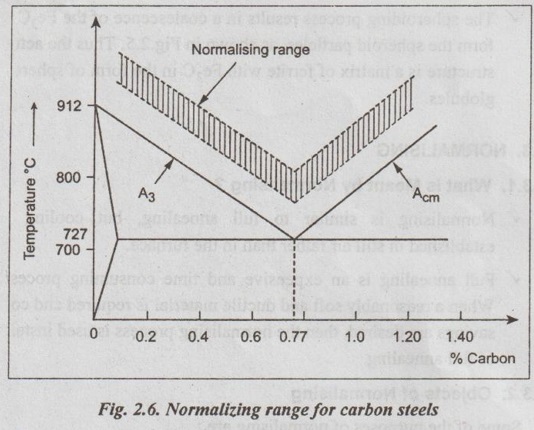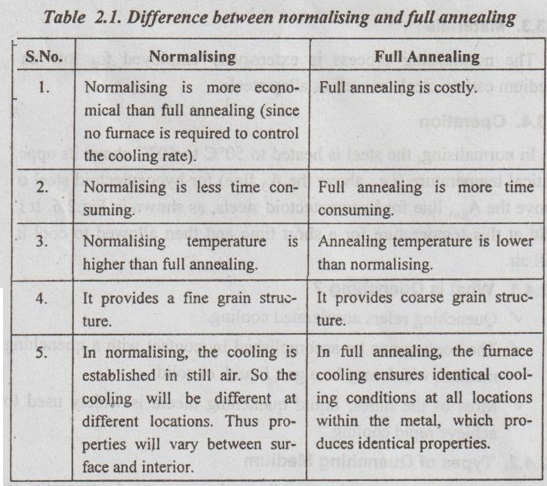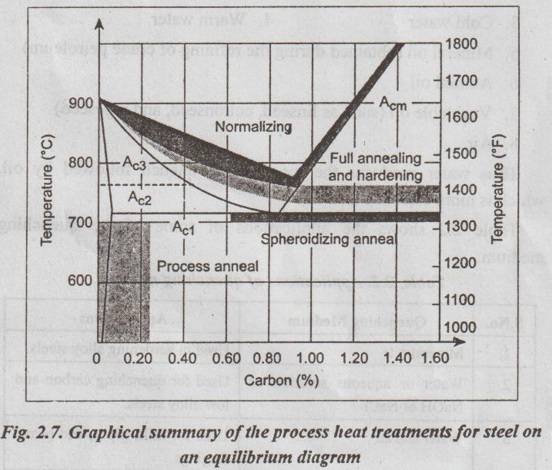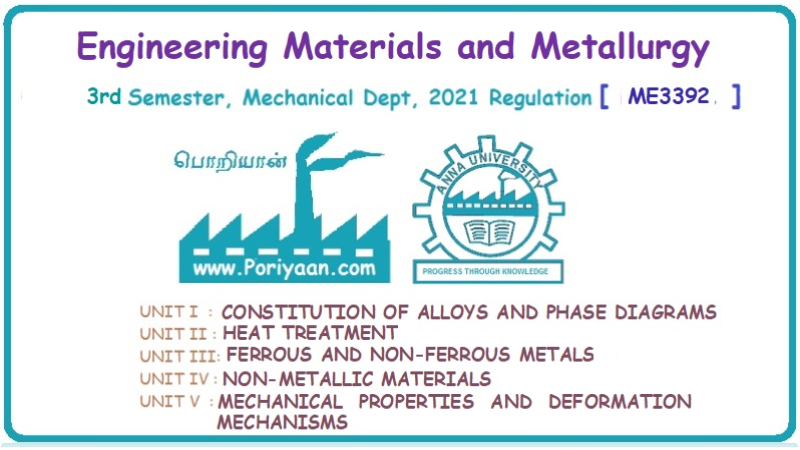Engineering Materials and Metallurgy: Unit II: Heat Treatment
Normalising
Meaning, Objects, Materials, Operation | Heat Treatment
Normalising is similar to full annealing, but cooling established in still air rather than in the furnace.
NORMALISING ✓ Normalising is similar to full annealing, but cooling established in still air rather than in the furnace. ✓ Full annealing is an expensive and time consuming process When a reasonably soft and ductile material is required and co savings are desired, then the normalising process is used instead of full annealing. Some of the purposes of normalising are: 1. To refine the grain structure. 2. To increase the strength of the steel. 3. To provide a more uniform structure in castings and forgings. 4. To relieve internal residual stresses due to cold working. 5. To achieve certain mechanical and electrical properties. The normalising process is extensively employed for low an medium carbon steels as well as alloy steels. In normalising, the steel is heated to 50°C to 60°C above its upper critical temperature (i.e., above the A3 line) for hypoeutectoid steel on above the Acm line for hypereutectoid steels, as shown in Fig.2.6. It is held at this temperature for a short time and then allowed to cool in still air. The normalising process provides a homogeneous structure onsisting of ferrite and pearlite for hypoeutectoid steels, and pearlite nd cementite for hypereutectoid steels. The difference between normalising and full annealing is presented Table 2.1. Fig.2.7 provides a graphical summary of the process heat treatments for steel on an equilibrium diagram.1. What is Meant by Normalising?
2. Objects of Normalising
3. Materials
4. Operation

5. Normalising Vs Full Annealing

6. Summary of the Process Treatments

Engineering Materials and Metallurgy: Unit II: Heat Treatment : Tag: : Meaning, Objects, Materials, Operation | Heat Treatment - Normalising
Related Topics
Related Subjects
Engineering Materials and Metallurgy
ME3392 3rd semester Mechanical Dept | 2021 Regulation | 3rd Semester Mechanical Dept 2021 Regulation
